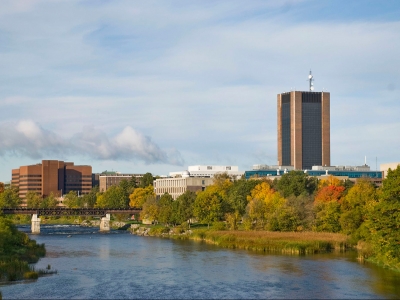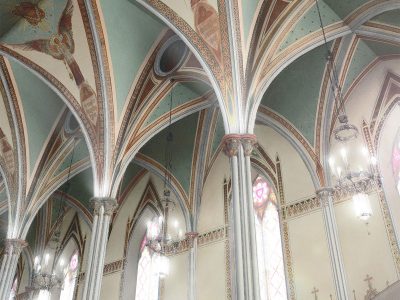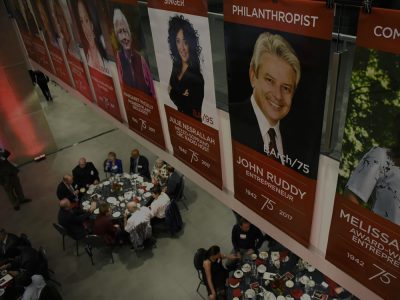By Susan Hickman
Photos by Claudia Schroder-Adams
Doctoral student Raymond Caron will tell you Carleton’s Earth Sciences Department is a high caliber department at the university. Comprising a close-knit group of people who are passionate about the varied topics associated with the field of Earth Sciences, the department, says Caron, always has something exciting to offer.
Caron, who is developing a methodology that uses helicopters and electromagnetics to reveal locations of hidden bedrock over large areas, explains that current methods of drilling and seismic surveying can be expensive and time-consuming.
“When it comes to geology,” he says, “there are few sources of information as critical as the bedrock and what it can tell you. Across Canada, however, bedrock is typically buried beneath soil or vegetation. In mineral exploration, knowing the location of the bedrock can directly influence the determination of the size or the presence of an ore body and an airborne system is faster than other methods.”
Equally passionate about her field of study is Arianne Petley-Ragan, a master’s student specializing in metamorphic geology.
“Metamorphism tells us a lot about the deep Earth,” says Petley-Ragan, who is fascinated with the department’s vast collection of metamorphic rocks. “A rock at great depth experiences pressure and temperature changes to the point where new minerals begin to crystallize, and studying these minerals gives us insight into the processes that are taking place deep beneath our feet.”
Caron and Petley-Ragan are among some 200 students in the Earth Sciences Department (about 20 per cent are graduate students), the largest number in its 60-year history.
Earth Sciences, says chair Sharon Carr, “is enjoying an exciting phase of growth and rejuvenation. We have been hiring new faculty and we’re embarking on a major renovation and exp
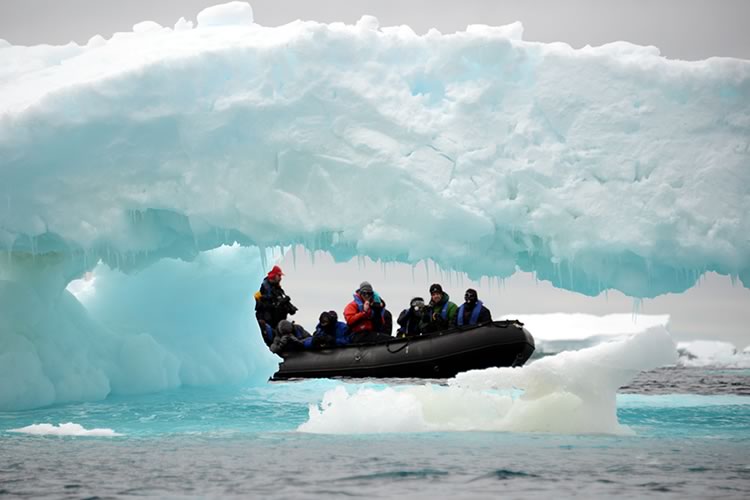
Antarctic Expedition 2013/2014 with Students on Ice, exploring brash ice. Photo Credit: Claudia Schroder-Adams
ansion in Herzberg Laboratories.
“Our students have wonderful opportunities to become involved in the wide variety of research going on, both high-tech and in the field, and to participate in field schools and international field trips,” notes Carr, a founding director of the Isotope Geochemistry and Geochronology Research Centre.
The department’s honours and general programs give graduates the credentials they need for a professional status. Concentrations include studies in vertebrate paleontology and paleoecology, geophysics and terrain science, and joint programs with other science departments stimulate cross-training. Earth Sciences also has a reputation for hands-on learning, offering senior students a wide range of research opportunities and unique field trips to world-class geological features in such countries as Chile, Hawaii and Antarctica.
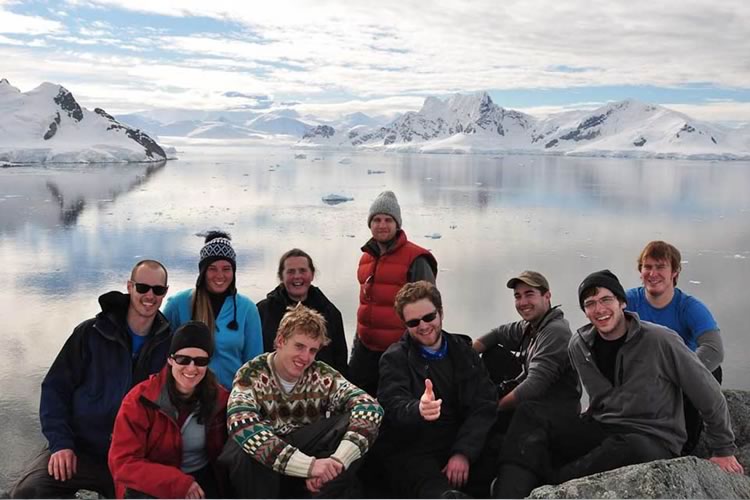
Carleton’s students explore the Antarctic Peninsula on the 2011. Photo Credit: Claudia Schroder-Adams
In the past, students have studied the active volcanism of Mt. Etna in Italy, the cave formations on the Spanish island of Mallorca and the geothermal fields and lava lakes of Iceland.
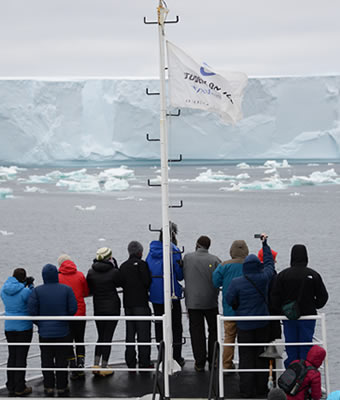
Antarctic Expedition, study of large tabular icebergs. Photo credit: Claudia Schroder-Adams
A year ago, micropaleontologist and earth sciences professor Claudia Schröder-Adams travelled with 13 students to the Antarctic Peninsula to study the geological history and ecosystem of the Southern Ocean in the Students On Ice program, an organization that takes students from all over the world on educational expeditions to the Arctic and Antarctica.
Master’s student Danielle Dionne, who was part of the December 2013 expedition, says: “Antarctica is challenging for geologists. Coal seams on Seymour Island, off the Antarctic Peninsula, are evidence of abundant vegetation, as are its diverse fossils and beautifully preserved tree rings that suggest a warmer climate in the past. It’s an amazing source of data.”
Fourth-year Earth Sciences student Brent Clark was mesmerized by the pure silence and the cracking of the glaciers. “It made me realize how truly small we are in this world. The trip taught me life is about pushing beyond your comfort zone and as you take that next step, you realize you are capable of achieving anything.”
It’s the kind of experience geophysicist Claire Samson wishes her students to have while they are young.
“When you are young, it is important to have rich, multi-faceted, diverse experiences. This is how you find out what will become your passion.”
Last May, and in May 2012, Samson organized mining trips to Chile for fourth-year and graduate geology students. She took 14 students this year to the nearly 200-year-old world’s largest underground copper mine El Teniente high in the Andes Mountains, where they could witness the copper extraction process and take a sedimentology excursion led by sedimentologist George R. Dix, who is currently doing research in Chile while on leave from Carleton.
“Another highlight this year,” adds Samson, “was the trip to La Serena, north of Santiago, to the Cerro Telolo Inter-American Observatory and the smaller El Pangue Observatory, where we looked at galaxies and the rings of Saturn. I found that pretty magical.”
The department recently launched a fundraising campaign for an Earth Sciences Undergraduate Honours Project Fund, established in honour of the department’s 60th anniversary, to support fourth-year students’ research projects ranging from studying fossils for clues to evolution and identifying contamination near mine sites to mapping ancient rocks to dig deep into Earth’s history and climate.
Friday, November 21, 2014 in Faculty of Science
Share: Twitter, Facebook
